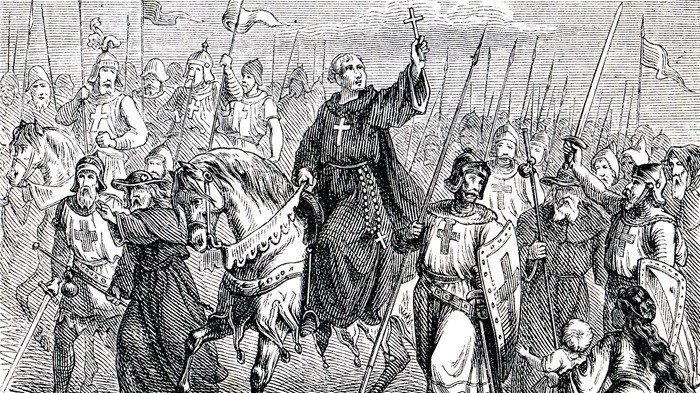
In 1919, American Indian religions were still outlawed. Federal Indian policy viewed American Indian religions as barriers to “civilizing” Indians and emphasized the importance of Christianity. Participation in traditional Indian ceremonies, such as the Sun Dance, the Sweat Lodge, and the Potlatch, was not only discouraged, but often criminalized.
While the government recognized that structures, such as churches, had special spiritual and religious meaning, the government did not view geographic locations and features, many of which had been used spiritually far longer than the United States had existed, as having any special significance and meaning. It should also be noted that many traditional Indian spiritual leaders were hesitant to talk about sacred places knowing that their ceremonial practices and beliefs were illegal.
Briefly described below are some of the religious issues and events involving Indians a century ago (1919).
Sioux
In South Dakota, several hundred Sioux were gathered for a Christian religious service when an old man told the missionary that lighting would strike someone in camp that day. The old man indicated that a picture had appeared on a holy rock while the dew was still on rock which foretold of this event. Later in day, lightning struck a tent and nearly killed a woman.
Creek
In Oklahoma, the building committee from the First Baptist Church of Henryetta visited Creek millionaire Jackson Barnett. While Barnett was not a church member (in fact, he does not appear to be a Christian), the committee reported that he was receptive to their request. Barnett, who was illiterate, then signed papers authorizing $25,000 for the church building fund. The Bureau of Indian Affairs endorsed the request. Historian Tanis Thorne, in his book The World’s Richest Indian: The Scandal Over Jackson Barnett’s Oil Fortune, reports:
“Whetted by the success in getting the $25,000 donation, the Baptist building committee and its allies had ambitions for getting even more of Jackson’s money.”
Lummi
In Washington, the Lummi held their traditional dances and the traditional leaders talked about sending a delegation to Washington, D.C. to discuss their right to religious freedom. However, a Catholic on the reservation complained about the “idol worshippers” and asked the Indian agent to jail them. The Bureau of Indian Affairs advised him that all pagan dances were to be stopped.
In an attempt to stop the dances, the Indian agent offered to pay any witnesses who would testify against the dancers. The agent argued that the dances violated state and federal health laws. The Catholic Church backed the agent’s campaign against the dance.
Prairie Potawatomi
Kansas outlawed peyote. Arvel Snyder, superintendent of the Prairie Potawatomi agency, began arresting Indians who were using peyote in their ceremonies.
Northern Cheyenne
In Montana, the Indian agent for the Northern Cheyenne Reservation summoned all of the known Indian medicine men, spiritual leaders, and healers to his office. Having prepared for the confrontation by placing a loaded pistol in his desk drawer, the agent then explained to the Cheyenne that their healing ceremonies were dangerous. He then presented of list of rules aimed at limiting the power of the Indian healers:
- Indian doctors were forbidden to initiate other doctors
- Indian doctors could not charge money or property for their services
- Indian doctors were not allowed to advise anyone against stock raising, farming, placing their children in school, or anything which would prevent them from becoming “self-supporting, respectable people”
- The use of the rattle and singing songs to a sick person were also forbidden
In his book Sweet Medicine: The Continuing Role of the Sacred Arrows, the Sun Dance, and the Sacred Buffalo Hat in Northern Cheyenne History, Father Peter J. Powell reports:
“The Cheyennes were temporarily silenced, but certainly not beaten.”
A group of Cheyenne priests appealed directly to the Commissioner of Indian Affairs to be allowed to continue doctoring, but the appeal was refused. In response, the Northern Cheyenne simply withdrew to the isolation of the pine hills where they could continue their ancient customs away from the eyes of the government.
In Montana, A. J. Dennis (aka David Israel), the self-proclaimed Head Chief and King Priest of the Restored Kingdom of Israel, came to the Northern Cheyenne reservation. He claimed that the Indians must be adopted into the tribes of Israel. He held some meetings with the Cheyenne and then was removed from the reservation by the Indian agent. The agent then advised the Cheyenne to pay attention to the real missionaries and to ignore the teachings of Dennis.
In spite of the opposition by the Indian agent and the missionaries, the new movement gained some followers. In her M.A. Thesis The Northern Cheyenne, Missionaries, and Resistance on the Tongue River Reservation 1884 through 1934, Nancy Pahr reports:
“His religious message conveyed the belief that a judgment day would arrive in which non-Indians would be destroyed, the buffalo would return and the Indians live as they had.”
In Montana, the Mennonite pastor for the Northern Cheyenne reservation, a man who was respected because he spoke fluent Cheyenne, preached a series of homilies on “The Kingdom of Satan.” Father Peter J. Powell reports:
“The pastor’s message was soon made clear to the people; the Kingdom of Satan lay in the practice of the Cheyenne sacred ways.”
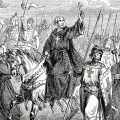
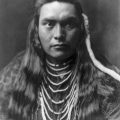
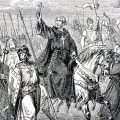
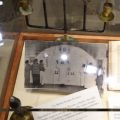
Leave a Reply